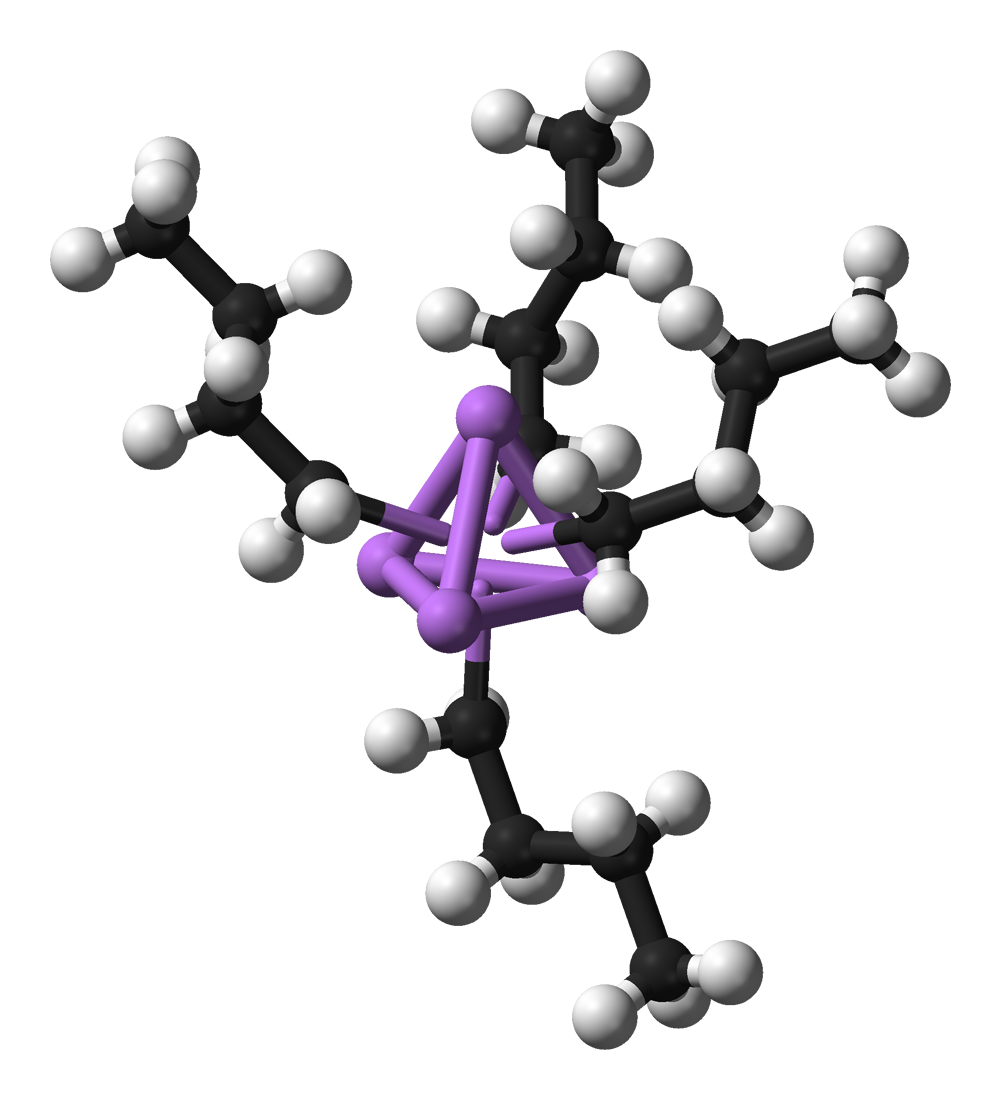|
Hexachlorobutadiene
Hexachlorobutadiene, (often abbreviated as "HCBD") Cl2C=C(Cl)C(Cl)=CCl2, is a colorless liquid at room temperature that has an odor similar to that of turpentine. It is a chlorinated aliphatic diene with niche applications but is most commonly used as a solvent for other chlorine-containing compounds.Manfred Rossberg et al. "Chlorinated Hydrocarbons," Ullmann's Encyclopedia of Industrial Chemistry, Wiley-VCH Verlag GmbH & Co, 2006, Kenric A. Marshall, "Chlorocarbons and Chlorohydrocarbons, Survey," Kirk-Othmer Encyclopedia of Chemical Technology, John Wiley & Sons Inc, 2003, Structurally, it has a 1,3-butadiene core, but fully substituted with chlorine atoms. Synthesis Hexachlorobutadiene is primarily produced in chlorinolysis plants as a by-product in the production of carbon tetrachloride and tetrachloroethene. Chlorinolysis is a radical chain reaction that occurs when hydrocarbons are exposed to chlorine gas under pyrolytic conditions. The hydrocarbon is chlorinated and the ... [...More Info...] [...Related Items...] OR: [Wikipedia] [Google] [Baidu] |
Hexafluorobutadiene
Hexafluorobutadiene is an organofluorine compound Organofluorine chemistry describes the chemistry of organofluorine compounds, organic compounds that contain a carbon–fluorine bond. Organofluorine compounds find diverse applications ranging from oil and water repellents to pharmaceuticals, ... with the formula (CF2=CF)2. A colorless gas, it has attracted attention as an etchant in microelectronics. It is the perfluoroanalogue of butadiene. Preparation It can be prepared by coupling of fluorinated C2 precursors. Addition of iodine monochloride to chlorotrifluoroethylene gives iododichlorotrifluoroethane that can be coupled in the presence of mercury to give 1,2,3,4-tetrchlorohexafluorobutane: : Zn-induced dechlorination of this tetrachloride gives the desired perfluorinated diene: : Reactions The diene can be rehalogenated, e.g. with bromine upon UV irradiation: : Hexafluorobutadiene dimerizes via a [2+2] process at 150 °C to give perfluorinated divinylcyclobutanes ... [...More Info...] [...Related Items...] OR: [Wikipedia] [Google] [Baidu] |
Room Temperature
Room temperature, colloquially, denotes the range of air temperatures most people find comfortable indoors while dressed in typical clothing. Comfortable temperatures can be extended beyond this range depending on humidity, air circulation, and other factors. In certain fields, like science and engineering, and within a particular context, room temperature can mean different agreed-upon ranges. In contrast, ambient temperature is the actual temperature, as measured by a thermometer, of the air (or other medium and surroundings) in any particular place. The ambient temperature (e.g. an unheated room in winter) may be very different from an ideal ''room temperature''. Food and beverages may be served at "room temperature", meaning neither heated nor cooled. Comfort temperatures Comfort temperature is interchangeable with neutral temperature in the scientific literature, which can be calculated through regression analysis between thermal sensation votes and indoor temperature. ... [...More Info...] [...Related Items...] OR: [Wikipedia] [Google] [Baidu] |
Halogenated Solvents
A solvent (from the Latin '' solvō'', "loosen, untie, solve") is a substance that dissolves a solute, resulting in a solution. A solvent is usually a liquid but can also be a solid, a gas, or a supercritical fluid. Water is a solvent for polar molecules, and the most common solvent used by living things; all the ions and proteins in a cell are dissolved in water within the cell. Major uses of solvents are in paints, paint removers, inks, and dry cleaning. Specific uses for organic solvents are in dry cleaning (e.g. tetrachloroethylene); as paint thinners (toluene, turpentine); as nail polish removers and solvents of glue (acetone, methyl acetate, ethyl acetate); in spot removers ( hexane, petrol ether); in detergents ( citrus terpenes); and in perfumes (ethanol). Solvents find various applications in chemical, pharmaceutical, oil, and gas industries, including in chemical syntheses and purification processes Some petrochemical solvents are highly toxic and emit ... [...More Info...] [...Related Items...] OR: [Wikipedia] [Google] [Baidu] |
Recommended Exposure Limit
A recommended exposure limit (REL) is an occupational exposure limit that has been recommended by the United States National Institute for Occupational Safety and Health. The REL is a level that NIOSH believes would be protective of worker safety and health over a working lifetime if used in combination with engineering and work practice controls, exposure and medical monitoring, posting and labeling of hazards, worker training and personal protective equipment. To formulate these recommendations, NIOSH evaluates all known and available medical, biological, engineering, chemical, trade, and other information. Although not legally enforceable limits, RELS are transmitted to the Occupational Safety and Health Administration (OSHA) or the Mine Safety and Health Administration (MSHA) of the U.S. Department of Labor for use in promulgating legal standards. All RELs are located in the ''NIOSH Pocket Guide to Chemical Hazards'', along with other key data for 677 chemical or substance gro ... [...More Info...] [...Related Items...] OR: [Wikipedia] [Google] [Baidu] |
National Institute For Occupational Safety And Health
The National Institute for Occupational Safety and Health (NIOSH, ) is the List of United States federal agencies, United States federal agency responsible for conducting research and making recommendations for the prevention of work-related occupational injury, injury, occupational disease, illness, disability, and occupational fatality, death. Its functions include gathering information, conducting scientific research both in the laboratory and in the field, and translating the knowledge gained into products and services.About NIOSH National Institute for Occupational Safety and Health. Among NIOSH's programs are determination of recommended exposure limits for toxic chemicals and other hazards, field research such as the Health Hazard Evaluation Program, epidemiology and health surveillance programs such as the National Firefighter Re ... [...More Info...] [...Related Items...] OR: [Wikipedia] [Google] [Baidu] |
Gregory S
Gregory may refer to: People and fictional characters * Gregory (given name), including a list of people and fictional characters with the given name * Gregory (surname), a surname * Gregory (The Walking Dead), fictional character from the walking dead * Gregory (Five Nights at Freddy's), main protagonist of '' Five Nights at Freddy's: Security Breach'' ** Places Australia *Gregory, a town in the Northern Territory * Gregory, Queensland, a town in the Shire of Burke ** Electoral district of Gregory, Queensland, Australia * Gregory, Western Australia. United States * Gregory, South Dakota * Gregory, Tennessee * Gregory, Texas Outer space * Gregory (lunar crater) * Gregory (Venusian crater) Other uses * "Gregory" (''The Americans''), the third episode of the first season of the television series ''The Americans'' See also * Greg (other) * Greggory * Gregoire (other) * Gregor (other) * Gregores (other) * Gregorian (other) ... [...More Info...] [...Related Items...] OR: [Wikipedia] [Google] [Baidu] |
Organometallic Chemistry
Organometallic chemistry is the study of organometallic compounds, chemical compounds containing at least one chemical bond between a carbon atom of an organic molecule and a metal, including alkali, alkaline earth, and transition metals, and sometimes broadened to include metalloids like boron, silicon, and selenium, as well. Aside from bonds to organyl fragments or molecules, bonds to 'inorganic' carbon, like carbon monoxide (Metal carbonyl, metal carbonyls), cyanide, or carbide, are generally considered to be organometallic as well. Some related compounds such as transition metal hydrides and metal phosphine complexes are often included in discussions of organometallic compounds, though strictly speaking, they are not necessarily organometallic. The related but distinct term "metalorganics, metalorganic compound" refers to metal-containing compounds lacking direct metal-carbon bonds but which contain organic ligands. Metal β-diketonates, alkoxides, dialkylamides, and metal p ... [...More Info...] [...Related Items...] OR: [Wikipedia] [Google] [Baidu] |
Nujol
Nujol is a brand of light paraffin oil that was produced by Schering-Plough that was commonly used in infrared spectroscopy. As a paraffin oil it is largely chemically inert and has a relatively uncomplicated IR spectrum, with major peaks between 2950-2800, 1465-1450, and 1380–1300 cm−1. Nujol is primarily a mixture of saturated hydrocarbons, i.e. alkanes with the formula . To obtain an IR spectrum of a solid, a solid sample is combined with Nujol in a mortar and pestle or some other device to make a mull (a very thick suspension). The mull can be sandwiched between infrared-transparent plates such as potassium- or sodium chloride Sodium chloride , commonly known as Salt#Edible salt, edible salt, is an ionic compound with the chemical formula NaCl, representing a 1:1 ratio of sodium and chloride ions. It is transparent or translucent, brittle, hygroscopic, and occurs a ... plates before being placed in the spectrometer. For very reactive samples, the layer of Nujol ca ... [...More Info...] [...Related Items...] OR: [Wikipedia] [Google] [Baidu] |
Mulling (spectroscopy)
Mulling is the process of grinding up a sample into fine powder through mortar and pestle that is dispersed in a paraffin for infrared spectroscopy. The resulting powder is sometimes called a mull. Sample preparation Using a nonporous ceramic mortar and pestle, a small quantity of the solid sample is ground up until the sample is exceedingly fine and has a glassy appearance. A drop of a mulling agent (see below) is added to the ground solid in the mortar. The mixture is further ground up to acquire a uniform paste with the consistency of toothpaste. The resulting paste is transferred to a salt plate (sodium chloride) with a small flat spatula. Applying another flat surface and sandwiching the paste under gentle compression renders the sample ready for analysis. Mulling agents There are a variety of mineral oils used as mulling agents, their relevant differences being the absorption bands in their respective infrared spectra. The mineral oil most commonly used in mulling is Nujol, w ... [...More Info...] [...Related Items...] OR: [Wikipedia] [Google] [Baidu] |
Hydrogen Chloride
The Chemical compound, compound hydrogen chloride has the chemical formula and as such is a hydrogen halide. At room temperature, it is a colorless gas, which forms white fumes of hydrochloric acid upon contact with atmospheric water vapor. Hydrogen chloride gas and hydrochloric acid are important in technology and industry. Hydrochloric acid, the aqueous solution of hydrogen chloride, is also commonly given the formula HCl. Reactions Hydrogen chloride is a diatomic molecule, consisting of a hydrogen atom H and a chlorine atom Cl connected by a Polar-covalent bond, polar covalent bond. The chlorine atom is much more Electronegativity, electronegative than the hydrogen atom, which makes this bond polar. Consequently, the molecule has a large Molecular dipole moment, dipole moment with a negative partial charge (δ−) at the chlorine atom and a positive partial charge (δ+) at the hydrogen atom. In part because of its high polarity, HCl is very soluble in water (and in other ... [...More Info...] [...Related Items...] OR: [Wikipedia] [Google] [Baidu] |





